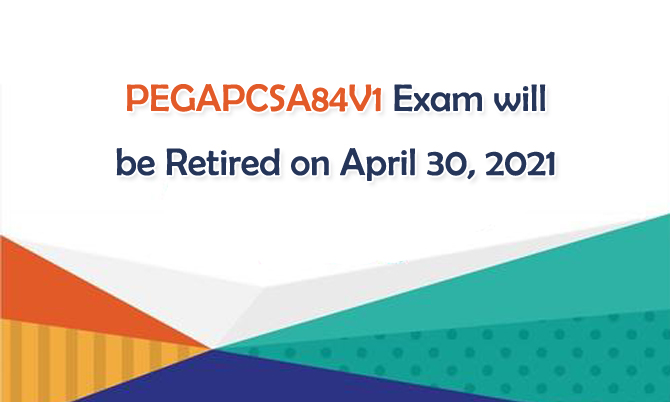PCSA Version 8.4 PEGAPCSA84V1 exam information is shown in the following table.
Pega Certified System Architect (PCSA) 84V1 PEGAPCSA84V1 exam topics cover the following details.
Case Management (40%)
Design a case lifecycle, stages, case statuses, adding instructions to assignments
Add a service level: urgency, goals, deadlines, passed deadlines
Route assignments to users, work groups, work queues
Configure approval processes, cascading approvals, authority matrix
Configure and send email correspondence
Identify duplicate cases; create temporary cases
Identify and add optional actions
Configure conditions on a decision step
Skip a stage or process
Pause and resume case processing; wait steps
Attaching PDF files to a case; automate decisions, decision tables, decision trees
Data and Integration (20%)
Describe a data object; group related data
Configure data types, create data objects
Identify and create calculated values
Make data available to an application; add data records to a data type
Integrate with external applications
Describe relationships between data types, cases, and systems of record
Validate data; configure data validation rules by using business logic
Configure a data transform to copy data from one case to another
Create field groups, field group lists
Manipulate data, set default property values, use data transforms
Access data stored in a case: persisting sourced data, refresh strategies, populate UI controls
Save data to a system of record
Simulate and add external data sources
Security (7%)
Manage user and role assignments
Configure security policies
Manage application access
DevOps (5%)
Use unit test rules
Create and execute scenario-based test cases
User Interface (12%)
Identify and configure fields and views
Style an application, use themes
Customize portal content, dashboards
Configure responsive UI behavior for a view
Customize form appearance, visibility settings, controls
Display list data and group fields in views
Application Development (11%)
Manage application development; user stories, feedback, bugs
Identify roles on a Pega project
Create and maintain rules, rulesets, classes, inheritance
View data in memory; clipboard tool, pyWorkPage
Debug application errors; Tracer
Reporting (5%)
Create business reports
Identify types of reports
Organize report results, use of columns and filters
PCSA Version 8.4 PEGAPCSA84V1 real exam questions can help you test all the above topics. Share some Pega Certified System Architect (PCSA) 84V1 PEGAPCSA84V1 real exam questions and answers below.
1.A customer refund case type requires that an auditor receives an email notification if the refund is greater than twice the price of the item. Which participant role do you select to configure this requirement?
A. Customer
B. Interested individual
C. Owner
D. Work queue
Answer: D
2.Hospital staff members enter appointment details including relevant patient information, diagnoses, lab orders, and prescribed medication. This information is aggregated in the Patient visit summary view. The patient receives a copy of this view through email. Which two configurations, when applied in combination, achieve this behavior? (Choose Two)
A. Add a Create PDF automation that references the Patient visit summary view.
B. Add a Send Email step and enable the option to include attachments.
C. Add a Send Email step and compose the message to reference the relevant properties.
D. Enable email notifications on the case type.
Answer: AC
3.When applying for a credit limit increase, customers with standard credit cards must provide information in an Employment Information process. Requests from customers with Platinum credit cards automatically skip this process. What task do you perform to implement this requirement?
A. In the Employment Information process add a card type true/false field to a user view.
B. In the Employment Information process add a custom condition to start the process by testing the card type.
C. In the Employment Information process add an Approve/Reject step to test the card type.
D. In the Employment Information process validate card type for continued processing.
Answer: A
4.Which two dependencies do you directly enforce with a Wait step? (Choose Two)
A. Pausing a case until a predetermined time expires
B. Pausing a case until a user submits a specified value
C. Pausing a case until another case reaches a specified status
D. Pausing a case until a new child case is created
Answer: BC
5.In an insurance claim application, you have the following requirement: All claims must be resolved within 1 week. To meet this requirement you configure a service level. Where should the service level be configured?
A. The process
B. The stage
C. The case type
D. The step
Answer: A
